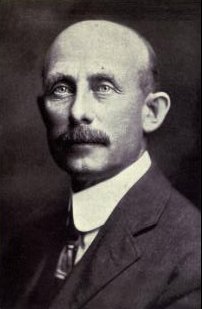- George Stewart Henry
Infobox_President
name = George Stewart Henry

caption =
order = 10thPremier of Ontario
term_start = December 16, 1930
term_end = July 10, 1934
predecessor =Howard Ferguson
successor =Mitchell Hepburn
birth_date = birth date|1871|7|16|mf=y
birth_place =King Township, Ontario
death_date = death date and age|1958|09|02|1871|07|16
death_place =Toronto, Ontario
party =Ontario PC Party
spouse = Anna Ketha Pickett
religion = United Church|George Stewart Henry (July 16, 1871 – September 2, 1958) was a farmer, businessman and
politician inOntario ,Canada .Born in Township of King, York County,
Ontario , the son of William and Louisa Henry, Henry was educated at the public schools of Toronto,Upper Canada College and theUniversity of Toronto where he received a B.A. and LL.B. He also spent a year at theOntario Agricultural College and decided to become a farmer inEast York, Ontario . He was a member of York Township Council from 1903 until 1910. He was reeve from 1906 to 1910 and was elected warden of York in 1909. [cite book|title=A cyclopædia of Canadian biography|year=1919|publisher=Hunter-Rose Company|url=http://www.archive.org/details/cyclopdiaofcan00charuoft]He was first elected to the
Legislative Assembly of Ontario in 1913 as a Conservative. In 1920 he ran for the leadership of the provincial Conservatives at that party's first everleadership convention but lost toHoward Ferguson who led the party to victory in the subsequent general election. From 1923 to 1930, Henry served as Minister of Highways in the Ferguson government, expanding on the highway system that was initiated by the previous government ofErnest C. Drury .When Ferguson stepped down in 1930, barely a year into the
Great Depression , Henry succeeded him as Conservative party leader andPremier of Ontario. Henry continued the programme of building roads, extending Ontario's highway system from 670 km to 3888 km.Construction of Canada's first four lane controlled access
superhighway , theToronto toNiagara Falls Queen Elizabeth Way , is the most lasting achievement of the highway program. Henry was opposed to government intervention to deal with the economy. Aside from building roads, his government did little to alleviate public suffering during the Depression, such as unemployment in the cities, or the collapse of prices for farm products in the country. Henry's government, like the federal government ofR.B. Bennett , established work camps for jobless men. They were established not so much to provide social welfare, but rather as social control, i.e., to evacuate this potentially radical element from the cities. The work camps also provided a source of labour for the construction of Henry's highway system.In the 1934 election, George Henry sought a new mandate from the voters in his first election as Premier. Some felt the government had little to offer beyond more road construction, and the Tories were soundly defeated by the
Ontario Liberal Party led byMitchell Hepburn .Henry's farm, now in the North York part of the City of
Toronto , became a subdivision of suburban houses in the 1960s, called "Henry Farm ". George S. Henry Academy is a public high school nearby.References
External links
* [http://www.heritagefdn.on.ca/userfiles/HTML/nts_1_6162_1.html The Ontario Heritage Foundation plaque - Honourable George Stewart Henry 1871-1958]
Preceded by: Edward Arunah Dunlop
1930-1933Treasurer of Ontario
1934Succeeded by: Mitchell Hepburn
1934-1943
Wikimedia Foundation. 2010.
